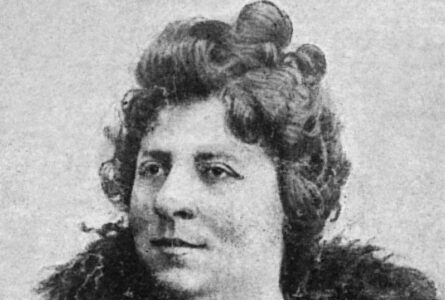
France
Hedwige Chrétien was born in 1859 in Compiègne (Oise), the eldest daughter of Marie-Léonie Ternizien and engineer Louis-Victor Chrétien. Her maternal grandfather, Jules Ternizien, was a professional violinist. She joined the Paris Conservatory, studying piano under Louise-Aglaé Massart, organ under César Franck, and composition under Charles Lenepveu and Ernest Guiraud, winning a first prize for counterpoint and fugue in 1887. She married a classmate, flautist Paolo Agosto Gennaro, the same year. They had at least one son, Marcel (born 1888), and one daughter, Cécile, who both became professional musicians. Chrétien returned to the Conservatory in 1890 to teach solfège, but left in 1892 to focus on composing – a talent for which she had already received acclaim in 1886 when she won a prize from the Société des Compositeurs de Musique for a lyric poem. Also in 1886, she published her Grand solo pour trombone ténor et piano, a morceau de concours for the Conservatory, which marked the beginning of her interest in winds – as evidenced by her Quintette pour flûte, hautbois, clarinette, basson et cor, published in 1887. She composed thirty-odd works of chamber music, and a handful for orchestra: Ballet oriental, which is thought lost, appears to have been performed at symphonies organised by the Paris Opera. Her surviving work also includes two opéras-comiques for salon performances, La Cinquantaine and Le Menuet de l’Impératrice, over seventy mélodies, a hundred-odd light works for piano, and some organ pieces – an instrument she returned to around 1920.
– Florence Launay –
[Traduction en anglais : Raphaël Meyer]
– Florence Launay –
[Traduction en anglais : Raphaël Meyer]
List of Works
Contributor:
Présence Compositrices - last updated 16 December 2024